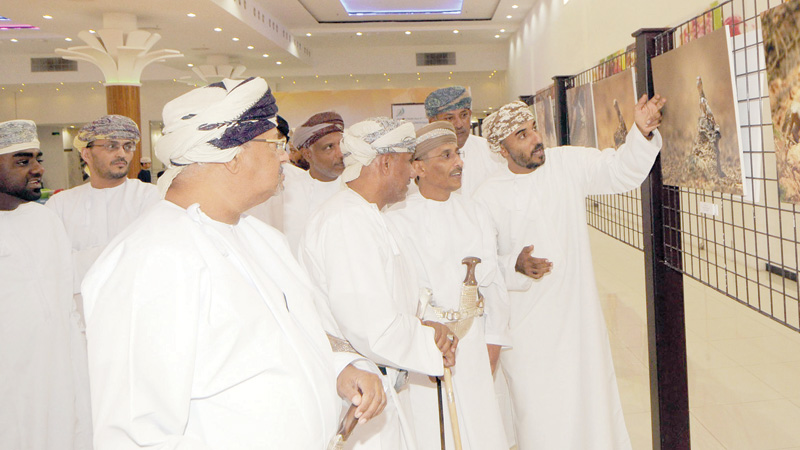

Kaushalendra Singh -
SALALAH, JAN 16 -
The Directorate of Environment in Dhofar organised a photo exhibition to mark the Omani Environment Day which falls on January 8 every year. The photo exhibition had 48 photos of animals, birds, landscape and some other natural settings of Dhofar.
All the pictures on show were great clicks of Said al Shanfari, an avid photographer and government employee in the Dhofar Governorate.
The two-day exhibition was opened under the auspices of Moosa bin Ahmed al Mashali, Director General of Sports in Dhofar. During the two days, Salalah Gallery, the exhibition venue, was a hub of activities as the Environment Directorate had lined up many programmes for children apart from the regular photo exhibition.
Mohammed al Shanfari, In-Charge of the Awareness Section at the Environment Directorate, said the exhibition was an attempt to raise awareness among the people about the importance of plants, birds, animals and beaches. He stressed the importance of keeping the beaches clean, not only for the sake of them looking good but also for the safety of the marine species.
“When plastic materials go into sea water, whether plastic bags or drifting fish nets, they pose a threat to the animals that depend on the oceans for food. To a sea turtle, a floating plastic bag looks like a jellyfish. Other plastic products become sort of plastic pellets when they mix with water. The small hard pieces, of plastic from which plastic products are made, look like fish eggs to seabirds. Drifting nets entangle birds, fish and mammals, making it difficult, if not impossible to move or eat. As our consumption of plastic mounts, so too does the danger to marine life,” he said.
The exhibition, according to him, had a message to protect Omani flora and fauna. “Creating awareness is our continuous process, which we do through plantation of native plants, beach cleaning with the involvement of local community, school and college students.”
“We select some enclosed locations for plantation through which we try to protect and conserve native plants so that those rare plants grow properly, as we seek support from institutions like schools and colleges or establishments where such seedlings are planted.”
“Previously also we did plantation with very high success rate. Today those plants are fully grown and giving us reason to go ahead with more such locations and with active support of local people who need to know the importance of protecting the native plants of Oman,” Mohammed al Shanfari said.
On the occasion of Omani Environment Day several government and non-government entities come together to spread the message of ‘safe environment’ in more successful and meaningful way. Many public institutions, such as the Ministry of Environment and Climate Affairs and the National Field Research Centre for Environmental Conservation of the Diwan of Royal Court, take steps to take up the cause of environment more vigorously.
Oman’s care for environment, according to an environment official, has drawn attention from many national and international agencies and there has been continued cooperation between the Sultanate and the United Nations in projects related to climate change, the protection of the ozone layer as also to improve efficiency and reduce greenhouse gas emissions.
Some of the Sultanate’s environment projects to conserve rare Omani species like turtles, leopards, Arabian Ibex, Arabian Gazelle, Sooty Falcon, and Houbara Bustard survey project, have evoked very good response from environmentalists. These projects are so unique in nature that some of them have attracted attention of a large number of tourists.
Among the Sultanate’s governorates, Dhofar has the distinction of being the richest in flora and fauna. One of the most important and widely known species are Luban or Mughereh (bowsellia sacra), which grows naturally in the arid areas of Dhofar mountains.
Luban has since ages been considered as an expensive commodity and today the tree’s gum known as frankincense is very popular for cosmetic, medicinal and incense purposes. Dhofari luban is great in demand from all kinds of tourists coming to Salalah. Recently it has gained commercial recognition and being exported to many Arab, Asian and European countries.
Omani Environment Day, according to Mohammed al Shanfari, “reminds us of our duties and challenges of conserving the environment by creating awareness among the people and adopting the best practises to make them successful and sustainable.”
— Picture by Hamed al Khatiri
Oman Observer is now on the WhatsApp channel. Click here



